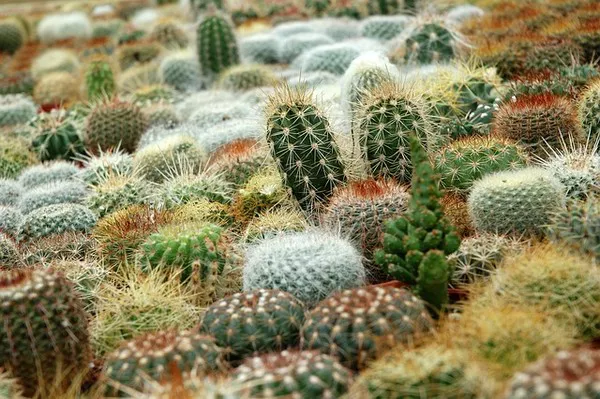Cactus succulents, with their striking appearance and low maintenance requirements, have become a popular choice for both novice and experienced plant enthusiasts alike. Their ability to store water in their fleshy leaves and stems allows them to thrive in arid conditions, making them ideal additions to any indoor or outdoor garden. However, despite their reputation for resilience, knowing how often to water cactus succulents is crucial for their health and longevity. In this comprehensive guide, we will delve into the intricacies of watering cactus succulents, providing valuable insights and practical tips for keeping these plants thriving.
Understanding the Anatomy of Cactus Succulents
Before delving into watering schedules, it’s essential to understand the unique anatomy of cactus succulents. Unlike traditional houseplants, cacti and succulents have evolved to survive in harsh, arid environments where water is scarce. Their thick, fleshy stems and leaves serve as reservoirs for storing water, allowing them to endure prolonged periods of drought.
Additionally, cactus succulents have specialized structures called “areoles” from which spines, flowers, and new growth emerge. These areoles play a crucial role in water absorption and distribution throughout the plant. Understanding these adaptations is key to developing an effective watering regimen that mimics their natural habitat.
Factors Influencing Watering Frequency
Several factors influence how often you should water your cactus succulents. By considering these factors, you can tailor your watering schedule to meet the specific needs of your plants:
1. Climate and Environment: The climate in which your cactus succulents are located plays a significant role in determining their watering needs. In hot, dry climates, plants may require more frequent watering to prevent dehydration. Conversely, in cooler, more humid environments, watering intervals may be less frequent.
2. Seasonal Variations: Cactus succulents experience natural fluctuations in water requirements throughout the year. During the growing season in spring and summer, plants may require more frequent watering to support growth and flowering. In contrast, during the dormant period in fall and winter, watering should be reduced to avoid overwatering and root rot.
3. Plant Size and Growth Stage: The size and growth stage of your cactus succulents also influence their water needs. Smaller, newly planted specimens may require more frequent watering to establish roots and acclimate to their environment. Mature plants, on the other hand, may require less frequent watering once established.
4. Pot Size and Soil Composition: The size of the pot and the type of soil used can impact water retention and drainage. Cactus succulents thrive in well-draining soil mixes that allow excess water to flow freely away from the roots. Additionally, pots with drainage holes help prevent waterlogged soil, reducing the risk of root rot.
5. Sunlight Exposure: The amount of sunlight your cactus succulents receive also affects their water requirements. Plants exposed to intense sunlight may transpire more rapidly, leading to increased water loss. Conversely, plants grown in low-light conditions may require less frequent watering to avoid waterlogging.
By considering these factors and observing your cactus succulents closely, you can develop a customized watering schedule that promotes optimal growth and health.
Establishing a Watering Schedule
While there is no one-size-fits-all approach to watering cactus succulents, establishing a consistent watering schedule based on the factors mentioned above can help ensure success. Here are some general guidelines to consider:
1. Water Intervals: In most cases, it’s best to water cactus succulents when the soil has completely dried out. Stick your finger into the soil up to the first knuckle to assess moisture levels. If the soil feels dry, it’s time to water. Avoid watering on a fixed schedule, as this can lead to overwatering or underwatering depending on environmental conditions.
2. Watering Technique: When watering your cactus succulents, thoroughly saturate the soil until water begins to drain from the bottom of the pot. Allow excess water to drain away completely to prevent waterlogging. Avoid misting or lightly spraying the foliage, as this can promote fungal diseases and rot.
3. Seasonal Adjustments: Adjust your watering frequency seasonally to accommodate changes in temperature, daylight hours, and humidity levels. During the active growing season in spring and summer, you may need to water more frequently, while reducing watering during the dormant period in fall and winter.
4. Monitor Plant Health: Pay close attention to your cactus succulents’ appearance and behavior to gauge their water needs. Signs of underwatering include shriveled or wrinkled leaves, while overwatering may cause yellowing or mushy stems. Adjust your watering schedule accordingly based on these visual cues.
5. Adapt to Individual Variations: Keep in mind that different species and cultivars of cactus succulents may have varying water requirements. Research the specific needs of each plant in your collection and adjust your watering approach accordingly.
By following these guidelines and remaining attentive to your cactus succulents’ needs, you can establish a watering routine that promotes healthy growth and thriving plants.
Conclusion
Watering cactus succulents is both an art and a science, requiring careful observation, experimentation, and adaptation. By understanding the unique adaptations of these plants and considering factors such as climate, seasonality, and individual variations, you can develop a customized watering schedule that meets their specific needs. Remember to prioritize well-draining soil, adequate sunlight, and regular monitoring of plant health to ensure optimal growth and longevity. With patience and diligence, you can master the art of watering cactus succulents and enjoy their beauty for years to come.


